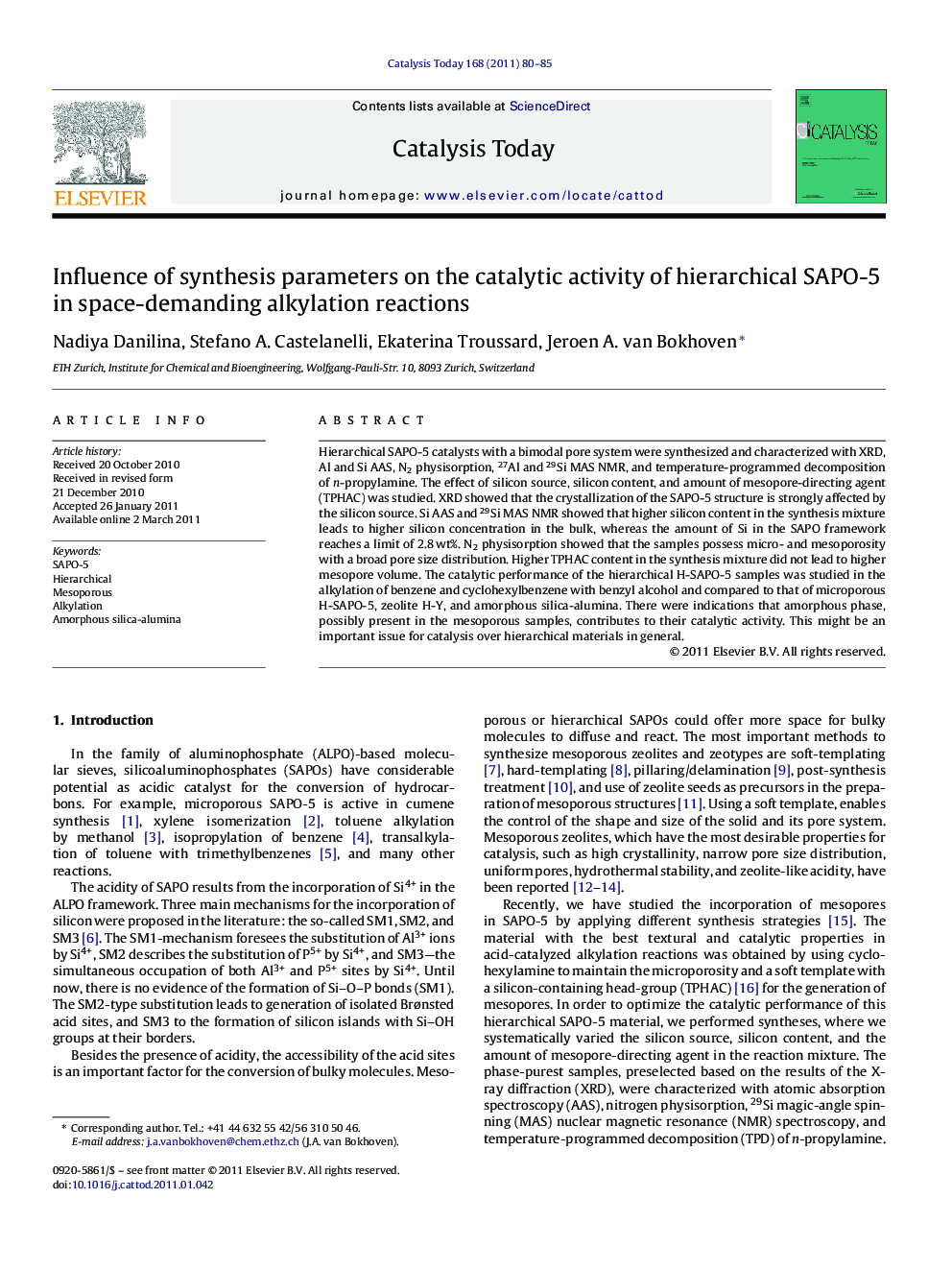| Article ID | Journal | Published Year | Pages | File Type |
|---|---|---|---|---|
| 56109 | Catalysis Today | 2011 | 6 Pages |
Hierarchical SAPO-5 catalysts with a bimodal pore system were synthesized and characterized with XRD, Al and Si AAS, N2 physisorption, 27Al and 29Si MAS NMR, and temperature-programmed decomposition of n-propylamine. The effect of silicon source, silicon content, and amount of mesopore-directing agent (TPHAC) was studied. XRD showed that the crystallization of the SAPO-5 structure is strongly affected by the silicon source. Si AAS and 29Si MAS NMR showed that higher silicon content in the synthesis mixture leads to higher silicon concentration in the bulk, whereas the amount of Si in the SAPO framework reaches a limit of 2.8 wt%. N2 physisorption showed that the samples possess micro- and mesoporosity with a broad pore size distribution. Higher TPHAC content in the synthesis mixture did not lead to higher mesopore volume. The catalytic performance of the hierarchical H-SAPO-5 samples was studied in the alkylation of benzene and cyclohexylbenzene with benzyl alcohol and compared to that of microporous H-SAPO-5, zeolite H-Y, and amorphous silica-alumina. There were indications that amorphous phase, possibly present in the mesoporous samples, contributes to their catalytic activity. This might be an important issue for catalysis over hierarchical materials in general.
